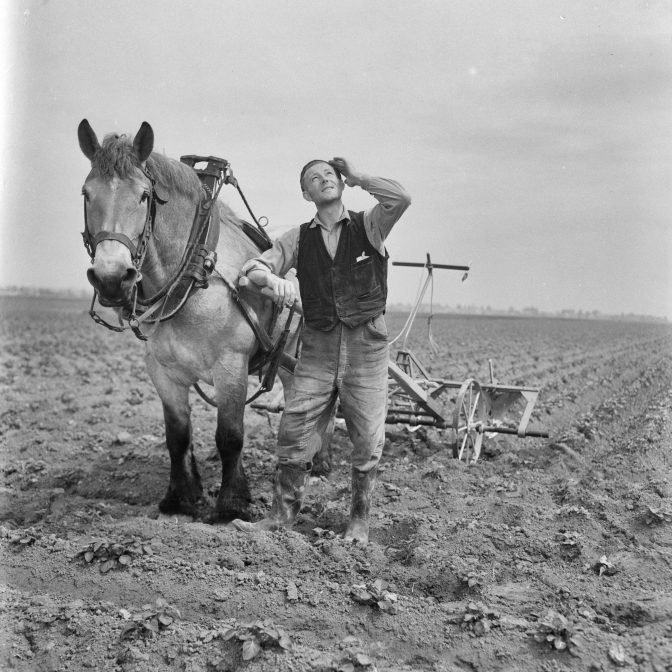I am having fun with an 1827 inventory of the assets belonging to an ancestor. I love reading between the lines to see what the items tell us about my ancestor. Here are some things I noticed.
- He owned multiple plots of land, had different crops in the field, and had several types of grain stored. Agriculture was likely his main source of income.
- He owned three cows, one calf, no bulls. Three cows is not enough to live off, so they were probably for their personal use and for the manure to fertilize the land. He must have used someone else’s bull to service the cows.
- He owned one horse, probably to pull the plow.
- He owned 26 sheep. I will check how close his land was to the heath/moors and if his farm had grazing rights. This would have provided more milk, wool, and meat to supplement the income.
- He owned three beds (bedding): one filled with down and two filled with straw. He had ten surviving children, some of whom were adults by the time the inventory was created. I do not think twelve people would have shared three beds only. Did the kids take their beds with them? Did all the boys share a bed and all the girls share a bed, and the parents had the down bed?
- He had a coffee set but not tea, while most people had a tea set as well. How can this be my ancestor?
- The inventory is created by room. Their house only had one room, apparently, plus an attic, a cellar (probably small since it only held one tub of butter), a shed, and stables. The only furniture was a table and six chairs, and a chest.
- He only owned one set of hearth plates. That tells us the house only had one hearth, which makes sense if it only had one room. The hearth would be the center of the household, where they would huddle together for warmth and do the cooking.
- The list of papers in the inventory mentions a copy of the last will of his first wife. I need to follow up on this.
- The inventory was created six years after his second wife died, thirty years before he died. What triggered the creation of the inventory? I am guessing there was another wife behind door number three.
- The assets were worth 1200 guilders, but he also had 1100 guilders in debt, so the balance was just 100 guilders. This tells me that my ancestor had a good enough reputation in his community that people were willing to lend him large sums of money to buy the things he needed for his household and farm.

Farmer. Credits: Harry Pot, collection Nationaal Archief (CC-BY)


That’s so fun! Where did you get the inventory of assets?
It was in the notarial records.